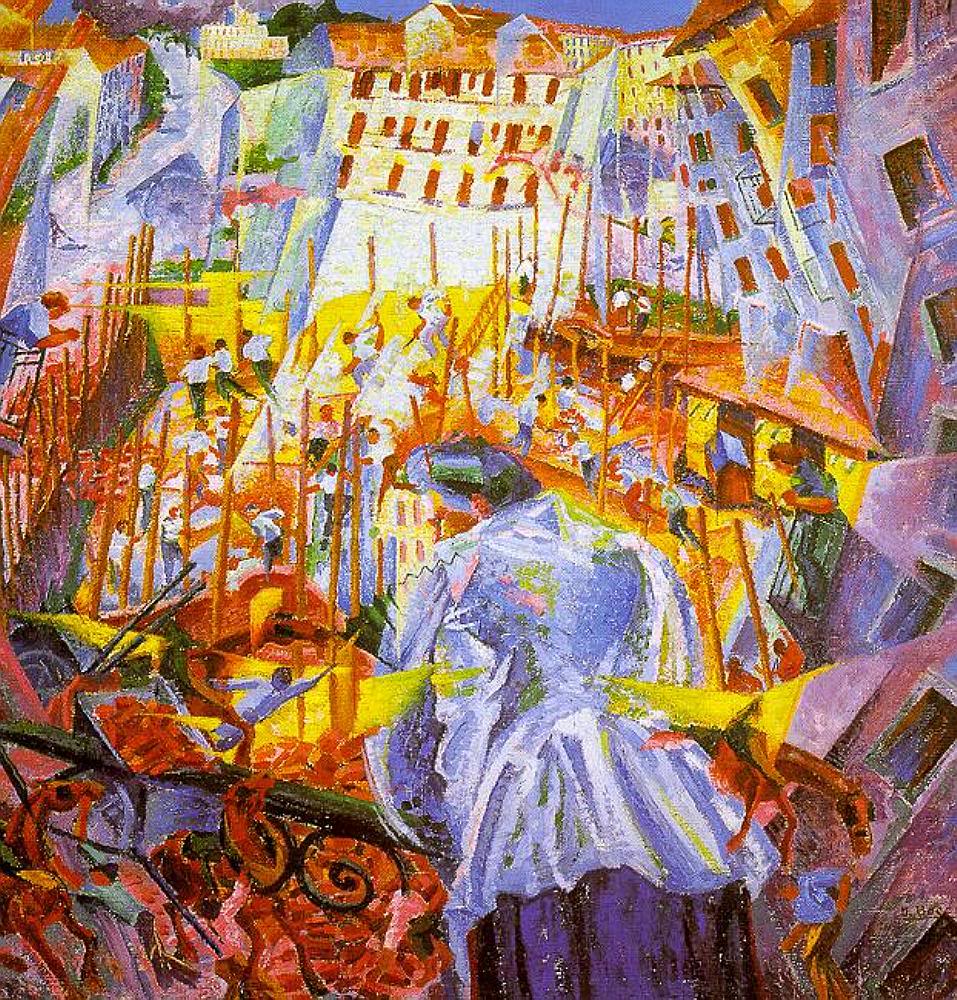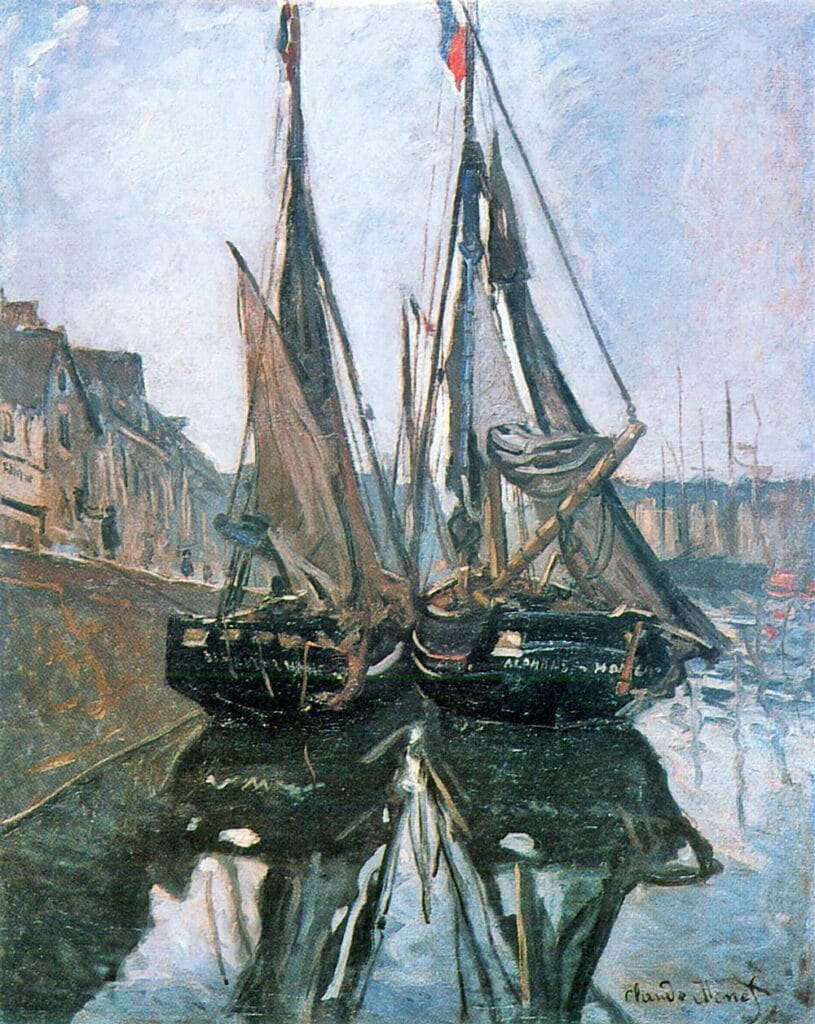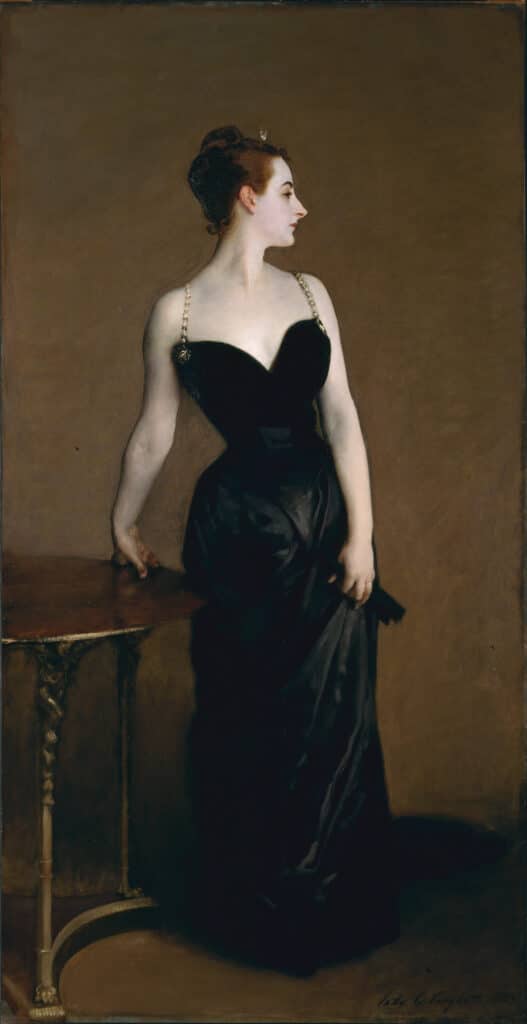Most beginner artists focus on the subject of their artwork, neglecting the importance of negative space.
Negative space is the area around and between the subjects of an image. When used effectively, it can add depth and interest to a composition.
In this guide, learn about negative space in art and how to use it to improve your compositions.
Disclaimer: Fine Art Tutorials is a reader supported site. When you make purchases through links on this site, we may earn a small commission at no extra cost to you.
What is negative space in art?
Negative space is the area around and between the subjects of an image. It is also called whitespace. However the area doesn’t have to be white, it could be another colour or background image.

If positive space is the focal point, negative space is the space surrounding it. Space can be used in art to create salience, a focal point and to show the relationship between different subjects and objects. For example in this artwork of the Pine Tree by Paul Signac, the tree could be defined as the positive space and the sky, grass and shadows are the negative space.
It’s a compositional device that can help give an art piece depth, balance and emphasis.
What is positive space?

Positive space refers to the area in an image that contains the main subjects and objects. The positive space is where the artist creates the scene, with detail, texture, line and values. The negative space, or lack of, shows the relationship between the areas of positive space. This painting by Umberto Boccioni shows how using mostly positive space in an artwork without much negative space can create a sense of chaos, dynamism and unrest.
Negative space in a composition
When composing a painting, white space can be used to create balance and visual interest. In some cases, the space between the subjects may be just as important as the subjects themselves.
Create balance

One of the main elements and techniques of composition is balance. A balanced artwork will elicit feelings of harmony and comfort from the viewer. Artists can create balance by evenly spacing objects and subjects, or creating symmetry in the artwork. To create balance in an artwork, the subjects and positive space shouldn’t all be concentrated in one area.
Focal point

Another way to use negative space is to create a focal point in your composition. By using negative space, you can draw the viewer’s attention to a particular part of an image and make it stand out.
Rhythm

Negative space can also be used to create movement, interesting patterns and subtle rhythms within a composition. This technique is often used in modern art, but can be adapted and applied to any medium or style of artwork.
Negative space composition example

The tree in this painting is the subject, but the surrounding sky forms an important part of the composition. The blank sky provides a sense of scale and allows the viewer’s eye to rest. In addition, the contrast between the tree and the sky creates visual interest and draws attention to the subject. To create unity between elements in a composition, position the elements closer to one another.
How to plan the composition
Plan the composition in an artwork by creating a series of composition sketches. To do this, sketch several small boxes on the page of a sketchbook. Sketch several versions of your subject and scene, mapping out where the elements will go. Rearrange the elements in each sketch to create harmony and balance, playing around with the negative space.

One helpful exercise is to complete a notan value study. This is where you draw a plan for your image with two values, black and white. This way, you can see how busy the image will look with regards to the dark and light value transitions. If the image looks too busy, you can always simplify it.
How to use negative space in art
There are several different techniques artists can use when working with white space. Some common examples include framing the main subject, overlapping objects, or creating contrast by using bright colors or dark backgrounds.

One great exercise to practice using negative space in art, is to draw a mini sketch of your subject in pencil. Draw the silhouette of the shapes and the space around it. Make sure not to include any details and shade around areas that are overlapping. By doing this, you can ensure that the composition of your artwork has the mood and effect that you want to portray in the piece.
Space in art
Space is one of the fundamental elements of art, alongside line, colour, value, texture, shape and form. It refers to the area around and between subjects, or the distance between different objects within an image.
This concept is closely related to composition, as it can be used to create balance and focus in a work of art.
Negative space in art: Famous examples

An excellent example of negative space can be found in the paintings of M. C. Escher. Escher was a Dutch artist who was known for his intricate geometric designs. Many of his works make use of tessellations, or repeating patterns. By filling the negative space with these patterns, Escher created works that are both visually complex and eye-catching.
Escher’s Optical illusions

Escher used perspective and careful placement of his subjects to create mind-bending works that play with the viewer’s perception and challenges our understanding of the world around us.
The work of M. C. Escher is known for its use of white space and optical illusions. Escher was able to create animals, birds, and other figures that appeared transition one another or walls that defy gravity by carefully manipulating the white space around these subjects.
Finally
Overall, negative space is an important concept in art that can be used in a variety of creative ways to create visually engaging works. Whether you are a painter, photographer or sculptor, understanding the role of white space in your work is essential to creating stunning pieces that evoke emotion and capture the viewers’ imaginations.

